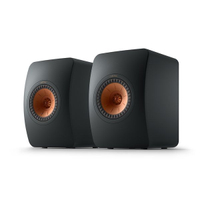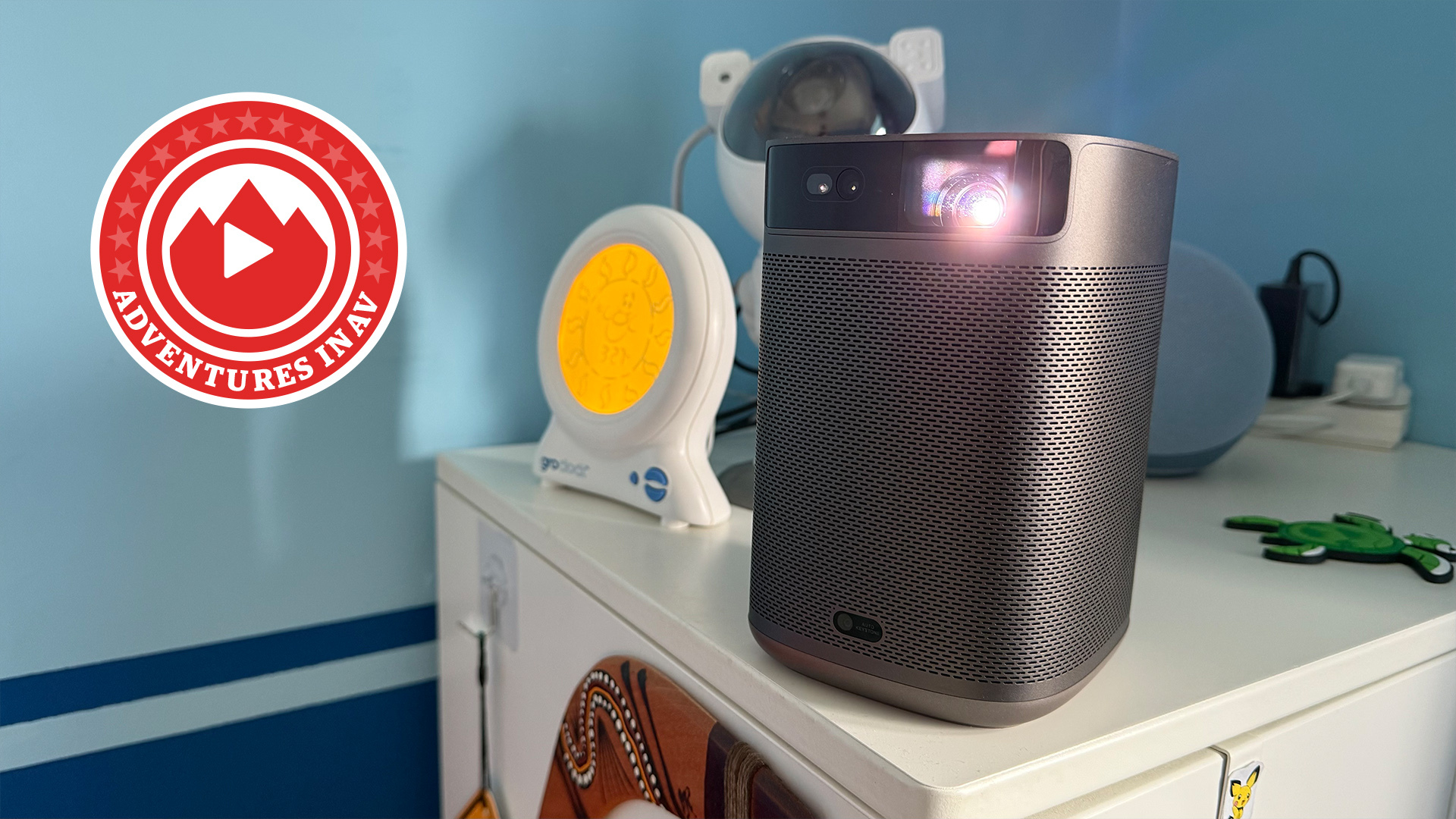What Hi-Fi? Verdict
The Mission 700 aren’t quite the talent we hoped for, but are worth considering all the same
Pros
- +
Sonic authority
- +
Taut, punchy bass
- +
Clear and open presentation
- +
Fine build
Cons
- -
Sound lacks a little cohesion and dynamic finesse
Why you can trust What Hi-Fi?

We originally reviewed the Mission 700 back in 2022 and they remain one of the more interesting contenders at the price. These are relatively big boxes, standing a lofty 51cm in height. Their generous cabinet volume helps to deliver a great sense of authority and impressively muscular lows. These are front-footed performers with a good sense of detail and scale. However, they lack the subtlety and finesse of class leaders such as KEF's LS50 Meta or the PMC Prodigy 1. Our original review of the Mission 700 is presented below unaltered.
The formula seems simple; take a well loved product from the past, re-engineer it to modern standards and then wait for nostalgia to take its course. It’s a formula that has worked brilliantly for the likes of JBL with its Classic range, and now Mission.
We reviewed the Mission’s first retro-themed speakers, the 770 (£3499 / $5000 / around AU$6225 ) a few months ago, and they are terrific. We suspect that the order book has been healthy, seeing as the company has quickly followed up with the more compact and affordable Mission 700 speaker we have on test here.
Both the original models were part of the same range, with the first 770 launched in 1978 and the smaller 700 a couple of years later. The importance of these speakers to Mission can’t be underestimated. At the time they were fresh, cutting edge designs that were fundamental to establishing the brand as a major force in the market.
Build
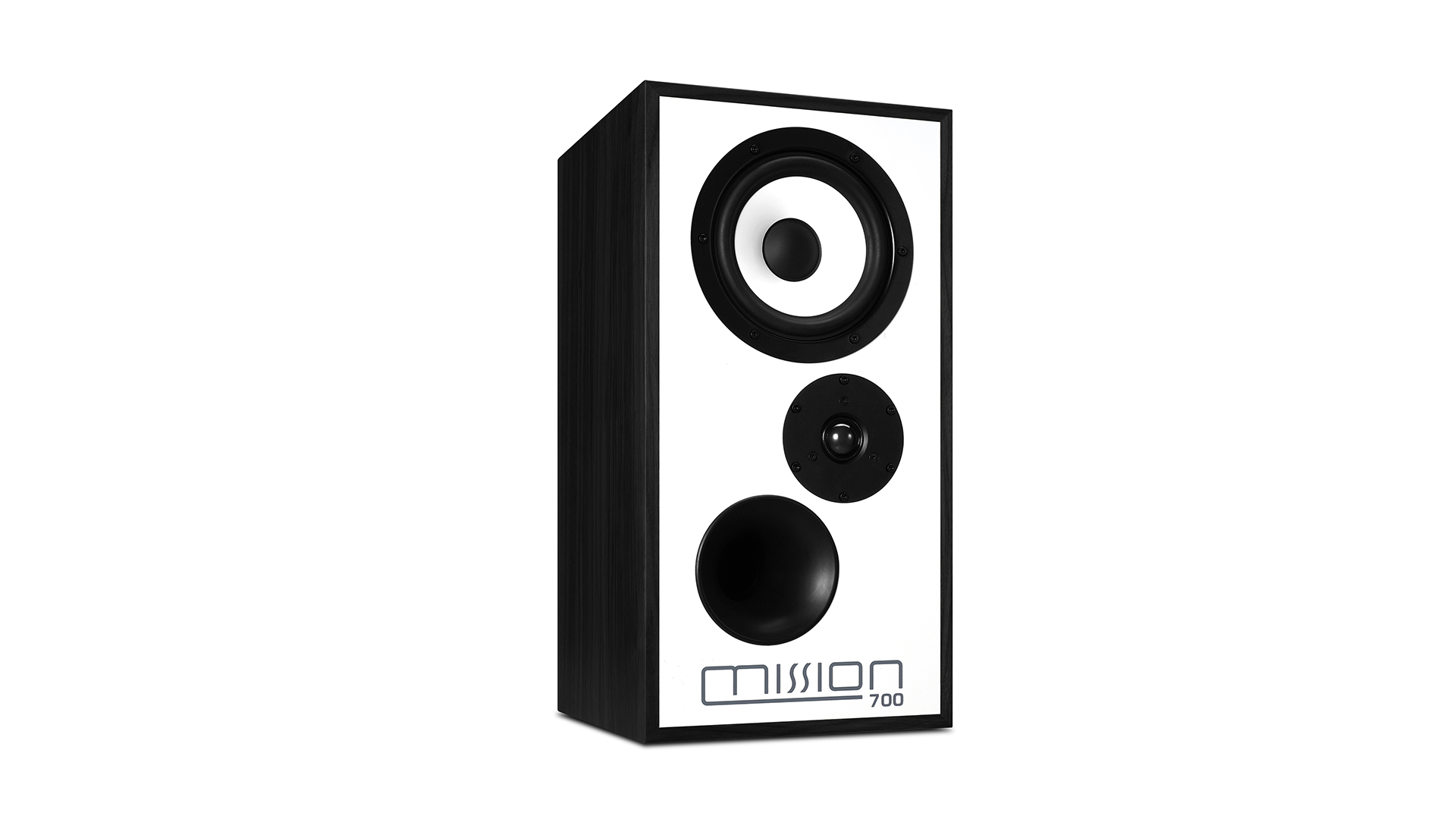
When we call the Mission 700 'compact', that’s only relative to its pricier sibling. By modern standards their 51 x 26 x 27cm (hwd) cabinet is pretty large. That size offers these speakers useful engineering advantages over the generally smaller modern competition.
On paper, a larger cabinet promises more extended bass, particularly as the wide front baffle allows for the use of a bigger mid/bass unit than would normally be found at this level. All things being equal, a larger driver delivers wider-ranging dynamics and the potential of higher replay levels. This is one of those cases where looking backwards really does offer some significant gains over modern slim and small designs.
Google the original 1980s 700 speakers and you’ll see that Mission has really worked hard to keep the visuals similar. There are differences of course: the new one has a white polypropylene mid/bass unit (that looks like a scaled down version of that used on the pricier 770) and the front-firing reflex port is significantly larger with more flare. Yet the position of the drive units (and port) are the same, as is the use of Mission’s distinctive but rather unsubtle original logo on a white front baffle. Place the two generations side by side and the resemblance is unmistakable.
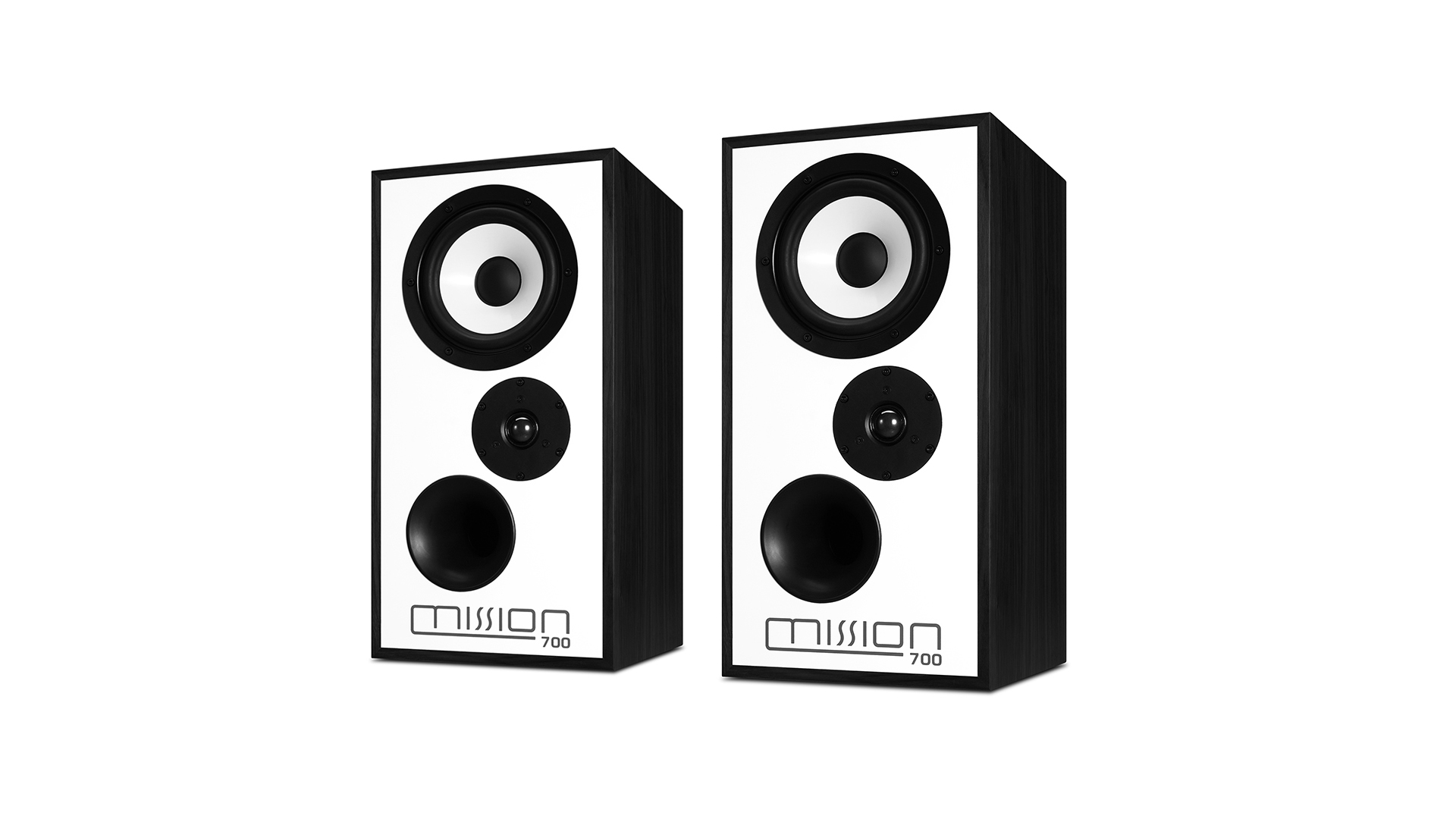
Type Two-way standmounter
Tweeter 28mm soft dome
Mid/bass 16.5cm mineral-loaded polypropylene
Sensitivity 86dB/W/m
Nominal Impedance 8 ohms
Reflex port Front firing
Biwire? No
Dimensions (hwd) 51 x 26 x 27cm
The speaker’s appearance may hark back to the dim and distant past but the engineering is very much of today. Both the 16.5cm mineral-loaded polypropylene mid/bass and the 28mm microfibre soft dome tweeter in the 700 are thoroughly modern units, designed with great care to reduce distortions and improve dynamic performance. The engineers even go so far as to have separate circuit boards for the treble and mid/bass crossover networks that prioritise simple, short signal paths and high quality components in a bid to increase transparency and reduce distortions.
Putting the original 700’s tweeter below the mid/bass was innovative back in the ’80s and went on to become something of a Mission trademark in the subsequent years. This is not something that's been done just to be different though; if implemented with care it time-aligns the sound from the two drivers better than the conventional tweeter on top configuration, so improving integration and sonic focus.
The nicely made wood veneered cabinet is as impressive as the drive units. It replaces the original’s rather basic box with a braced, composite structure that combines high-density MDF with particle board (bonded with high damping glue) to provide a rigid and low resonance platform for the drive units to work from. Even the single-wire speaker terminals look smart, being chunky and nice to use.
Compatibility
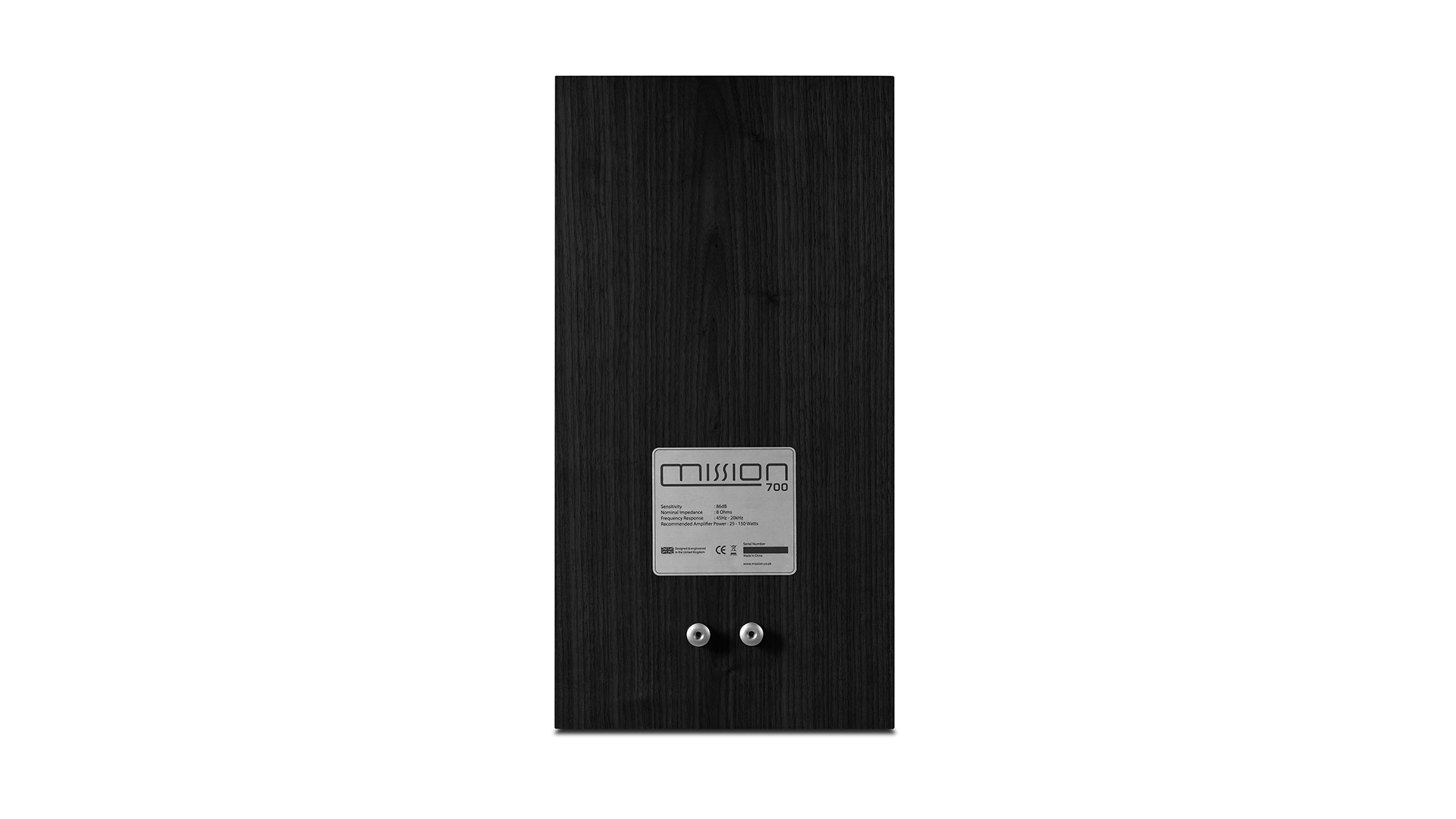
The performance of standmounters is heavily dependent on their support, so it makes perfect sense for Mission to make dedicated stands for the new 700. It’s a nicely-made steel frame structure that bolts together in around 15 mins and lifts the speakers to the right kind of height. The pricing is sensible too, at £299 ($344/AU$500) per pair.
Any speaker at this level can’t afford to be too critical of partnering equipment, as it’s as likely to be partnered with a premium lifestyle all-in-one system such as the Cambridge Audio Evo 75 as it is higher-priced quality separates. Given a sensitivity of 86dB/W/m it’s fair to say all but the weediest amplifier should be able to get decent levels from these standmounts in most size compatible rooms. A claimed 8 ohm nominal impedance (with a minimum of 5.2 ohms) certainly indicates that these aren’t a particularly tricky load for most amps.
These Mission 700 speakers aren’t particularly fussy about positioning either. In our test room they sound best just short of a metre from the rear wall and well clear of the sides. They certainly benefit from being angled-in towards the listening position, which improves the focus and solidity of the stereo imaging.
We use our usual reference system of Naim ND555/555 PS DR music streamer and Burmester 088/911 Mk III amplifier for part of our test, but also try the speakers with the budget Marantz PM6007 integrated amplifier and the more premium Naim Supernait 3 to see how they deal with a range of sonic signatures and abilities.
Sound
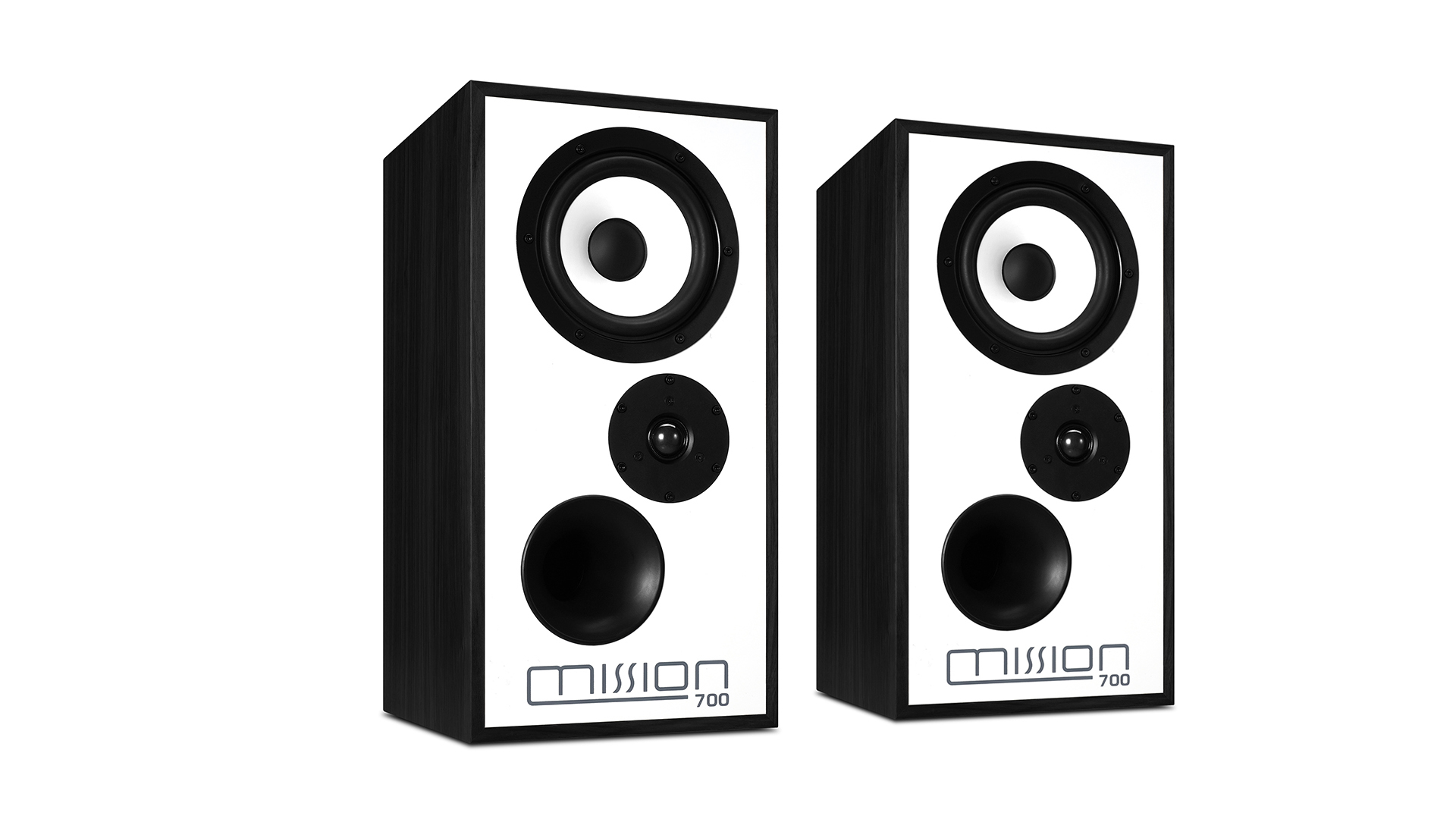
Let us get one thing straight. These are not the Mission 770 on the cheap. The massive difference in price suggests as much. Still, we are surprised that beyond general tonal balance the two speakers don’t share much of the same character; the bigger speaker being notably more expressive and entertaining.
However, the real battle isn’t the sibling rivalry. It’s similarly-priced competition such as the KEF LS50 Meta and the ATC SCM 11 that the Mission 700 have to outshine. And to a certain extent they do.
Play Hans Zimmer’s Interstellar OST and the Mission 700’s strengths come to the fore. These boxes sound impressively big and authoritative, making use of that larger-than-average stature to deliver the lows with conviction. Those bass notes are taut and agile too, and rendered with a pleasing amount of texture. It’s all nicely blended so no part of the frequency range sticks out.
These Missions have an upfront, open presentation with plenty of punch. Large-scale dynamic shifts are communicated forcefully, and the 700 have no trouble playing at high levels. Despite having a tweeter with bite there’s enough refinement to cope with less than perfect recordings, though a bit of care with system matching wouldn’t go amiss.
Our attention is drawn to the high level of clarity on offer here and the pleasing resolution of detail. It’s a crisp, sharply drawn sound that is forthright in nature without being overly aggressive. There’s a good sense of control, and the ability to track a multitude of instrumental strands without sounding confused.
Once positioned with care these standmounters generate a nicely focussed and precise stereo image. It is convincingly layered and remains stable even when the music becomes demanding.
Yet, despite all these good qualities the Mission 700 fall a little short of the class leaders. KEF’s LS50 Meta, while slightly cheaper but also the class champ, come across as more enjoyable thanks to their better sense of cohesion, stronger rhythmic drive and subtler way with dynamic nuances.
We compare the two over a range of recordings – Nick Cave’s Carnage, Catch A Fire by Bob Marley and Outkast’s The Love Below – and find ourselves preferring the KEFs on every occasion. The LS50 Meta are just more fun and make us want to listen more. The Missions have advantages in terms of muscularity, bass reach and openness, but that's not enough to swing our vote.
Verdict
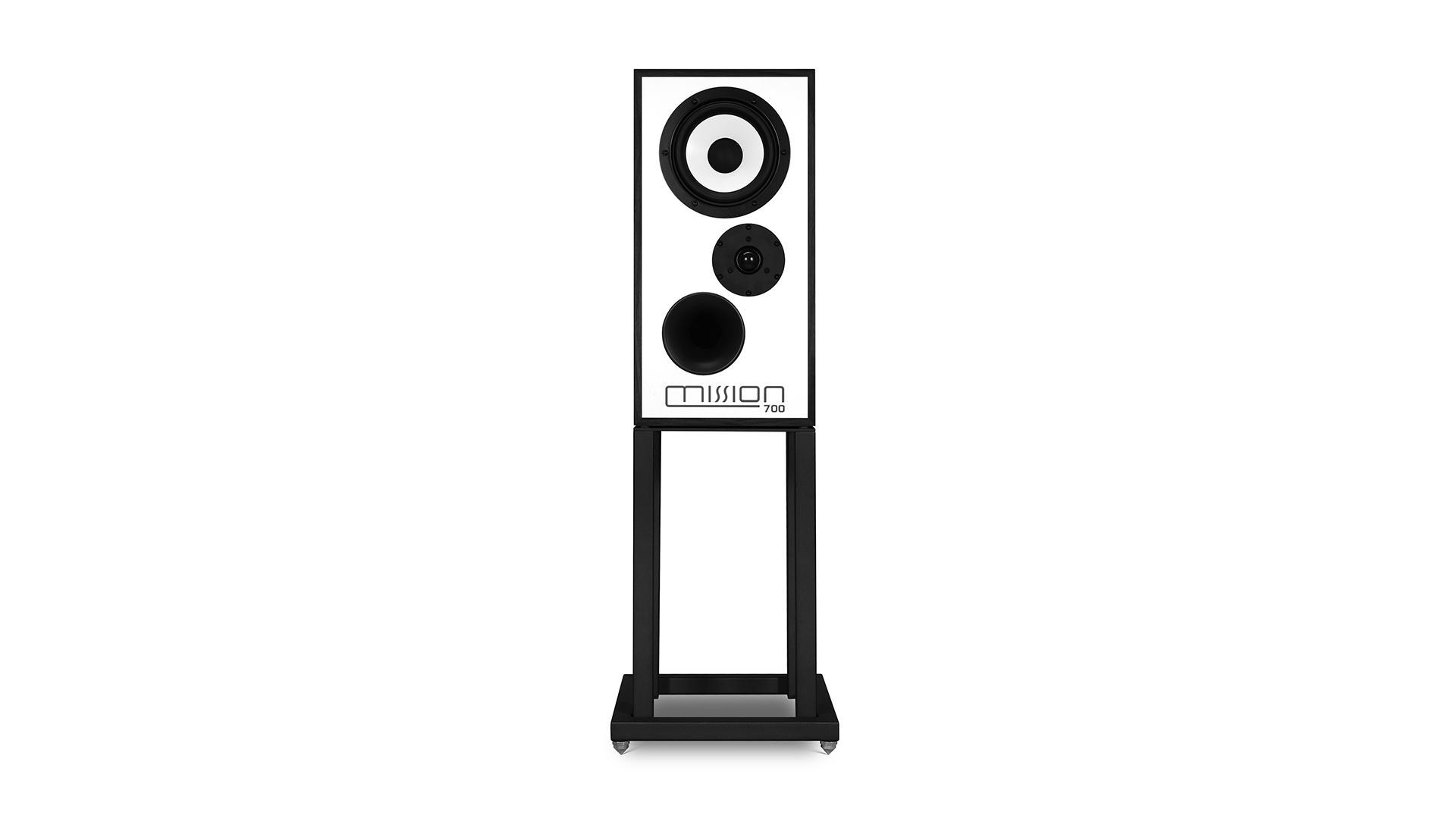
The Mission 700 have plenty of appeal and are capable, but they’re up against some terrific competition at this level. If the retro-theme appeals by all means dive right in, but, a little regretfully given how much we love the bigger 770, they wouldn’t be our default choice.
SCORES
- Sound 4
- Build 5
- Compatibility 4
Also consider
KEF LS50 Meta
KEF's classic monitor continues to set the standard for standmounter designs at this price. It's a pretty small box, so don't expect seismic bass output, but in every other area, it is good enough to outclass just about every rival.
PMC's baby standmounters are outstanding performers that offer a blend of insight, dynamics and articulation that's difficult to better for the money. While we can complain about the drab finish there is little else to criticise about its otherwise pleasing build.
MORE:
Read our review of the KEF LS50 Meta
Also consider the KEF R3
Read our ATC SCM 11 review
What Hi-Fi?, founded in 1976, is the world's leading independent guide to buying and owning hi-fi and home entertainment products. Our comprehensive tests help you buy the very best for your money, with our advice sections giving you step-by-step information on how to get even more from your music and movies. Everything is tested by our dedicated team of in-house reviewers in our custom-built test rooms in London, Reading and Bath. Our coveted five-star rating and Awards are recognised all over the world as the ultimate seal of approval, so you can buy with absolute confidence.
-
FJmack The review says “Let us get one thing straight. These are not the Mission 770 on the cheap… the two speakers don’t share much of the same character”. Ouch! That will hurt.Reply
The 770s cost £2000 more. Much of that will be because they are made in the UK whereas the 700s are made in Mission’s factory in China so more people will be able to afford them.
So why is Mission, a Chinese business, deliberately increasing its costs with the 770s? The review of the Chinese built 700s gives them 5 stars for build and says “fine build” so it’s not to improve the product.
I think it’s because the 770 is intended as a statement product. They could make it perfectly well in China for probably less than half the price and sell lots more but that isn’t what you do with a statement product. A statement product is something that you deliberately put a ridiculously high price on. It’s about brand image. And you pander to peoples’ prejudices, in this case unjustified prejudices against Chinese manufacturing. You don’t expect many people to be naive enough to actually buy them as they are hugely overpriced, poor value for money - even Mission has said that production of the 770s will be “limited”.
What you do want is people to buy the cheaper versions believing that you get most of the benefit of the statement product for a fraction of the price. Mission is not alone - car companies produce absurdly expensive models to show off on Top Gear etc. but almost no one buys them. They are not meant to.
Then the What HiFi review says “the two speakers don’t share much of the same character” well – ouch! -
infotrad Back in the early 80s, my B&W DM4s were stolen. I bought a pair of Mission 700s. They sounded horrible compared to the DM4s.Reply
